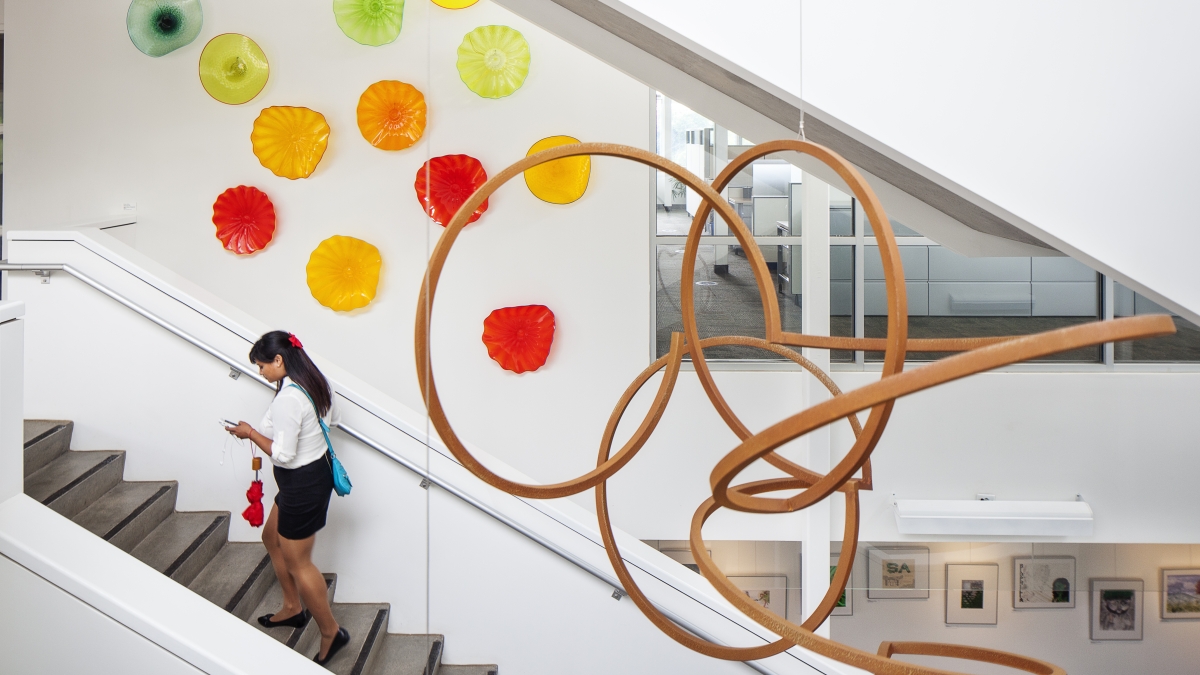Calling all nature lovers: ASU student design contest offers scholarship prizes

Biophilic design, which aims to incorporate nature into a built environment, has been shown to increase productivity and reduce stress in various studies. Photo courtesy Sonja Bochart
Arizona State University is hosting a design contest for students that will offer more than $4,000 in scholarships for the winners, but access to a Latin dictionary might give entrants a leg up on the competition.
The office of University Sustainability Practices is accepting design proposals for its Biophilia Contest for the Tempe campus Memorial Union and the Sun Devil Fitness Centers across all campuses.
Biophilic design, which aims to incorporate nature into a built environment, has been shown to increase productivity and reduce stress in various studies. The concept is all inclusive, as just adding a plant or an aquarium to a small room can enhance mood and creativity.
“This is an emerging design field, and the [Memorial Union] and the fitness centers are leaders in a lot of ways, they innovate in a lot of ways, so I think our students are the perfect group to work on it,” said Lesley Forst, program coordinator for the office of University Sustainability Practices.
Biophilia, or “love for humanity and nature,” is a concept first theorized by German psychoanalyst and philosopher Erich Fromm and expanded on in the 1984 book “The Biophilia Hypothesis,” edited by Stephen Kellert and Edward Wilson. The book theorizes that humans have an evolutionary preference to preserve and appreciate nature, exemplified by our general attraction to the facial features of baby mammals and other species, as well as a continued history of care for flora and fauna across the world.
The practice differs from biomimicry, which attempts to emulate and mirror nature in design, but shares some of the same core principles in appreciation of nature and life as a whole.
Design teams made up of current ASU students have until Dec. 1 to submit their proposals to an 11-judge panel of green building design professionals and ASU building and activities administrators.
Semifinalist proposals will be open for online voting by the entire student body. The first-place team will receive a $3,000 scholarship, with second and third place earning $1,000 and $500, respectively.
The winning proposal has the potential to be installed on campus, and with renovations to the fitness centers and the Memorial Union on the horizon, Forst and the judging panel are hoping to see design teams from different program specialties working together to come up with unique and creative proposals.
However, the contest is not restricted to the Memorial Union and fitness centers, and design teams are allowed to submit proposals for any building across the ASU campuses.
“I think it’s the first time in design history that [biophilic design’s] had such a broad offering,” said judging panel member Sonja Bochart, a Tempe-based interior designer and Herberger Institute adjunct faculty member. “I am very drawn to the interdisciplinary perspective for biophilic design — you can bring together so many different disciplines and people with different backgrounds in creating solutions for both the human experience in the built environment and also ecological considerations.”
Visit cfo.asu.edu/sustprize for a complete list of rules and applications.
More Environment and sustainability

ASU prof turns trash into treasure
The Research Corporation for Science Advancement, or RCSA, regularly hosts a series of discussions known as Scialog, a…

Best outdoor experiences are shared and build connections, recreation professor says
Steve Sassaman doesn’t really need to tell you he’s an outdoorsman. One look at his full, dark beard gives a vibe that clearly…

ASU offers new project-based courses for global leaders of tomorrow
Addressing complex challenges requires innovative solutions.This is why the College of Global Futures — with its four academic…